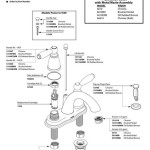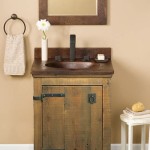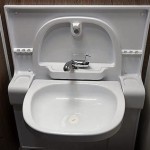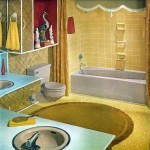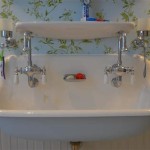Cost To Rough Plumb A Basement Bathroom: A Comprehensive Guide
Adding a bathroom to a basement can significantly increase a home's value and functionality. One of the primary aspects of this project is rough plumbing, which involves installing the drain, waste, and vent (DWV) system, as well as the water supply lines. Understanding the costs associated with this phase is crucial for budgeting and project planning. The cost to rough plumb a basement bathroom can vary widely depending on several factors, including the size of the bathroom, the complexity of the plumbing system, the location of the existing plumbing, and the local labor rates.
This article aims to provide a detailed overview of the various factors that influence the cost of rough plumbing a basement bathroom. It will cover the different components of the plumbing system, the materials involved, the labor costs, and other potential expenses. By understanding these factors, homeowners can make informed decisions and avoid unexpected costs during their basement bathroom renovation.
Key Factors Influencing the Cost of Rough Plumbing
Several key factors directly impact the cost of rough plumbing a basement bathroom. These factors include the following:
1. Complexity of the Plumbing System: The complexity of the plumbing system is a major cost driver. A simple bathroom layout with a toilet, sink, and shower will generally be less expensive to plumb than a more elaborate design with multiple fixtures or specialized features like a soaking tub or body sprays. The more fixtures that need to be connected, the more materials and labor will be required.
2. Distance to Existing Plumbing: The distance from the new bathroom to the existing plumbing lines significantly impacts the cost. If the new bathroom is located close to the main water and drain lines, the cost will be lower. However, if the plumber needs to run pipes across a large portion of the basement, the cost will increase substantially due to the increased materials and labor involved. This often involves breaking concrete, which adds to the overall cost.
3. Type of Plumbing Materials Used: The type of plumbing materials used can also influence the cost. Common materials include PVC (polyvinyl chloride), CPVC (chlorinated polyvinyl chloride), PEX (cross-linked polyethylene), and copper. PVC is typically used for drain lines, while CPVC and PEX are commonly used for water supply lines. Copper is a more traditional option for water supply, but it is generally more expensive than CPVC and PEX. The choice of material depends on local building codes, personal preference, and budget considerations.
4. Permits and Inspections: Obtaining the necessary permits and inspections is an essential part of any plumbing project. The cost of permits varies depending on the location and the scope of the project. Inspections are required to ensure that the plumbing work meets local building codes. Failure to obtain permits or pass inspections can result in fines and delays.
5. Labor Costs: Labor costs account for a significant portion of the overall cost of rough plumbing. The hourly rate for plumbers varies depending on their experience, location, and the demand for their services. Hiring a licensed and experienced plumber is crucial to ensure that the work is done correctly and meets local building codes. While DIY plumbing may seem like a cost-saving option, it can lead to costly mistakes and potentially dangerous situations if not done properly.
6. Breaking Concrete Slab: If the basement floor is concrete, it may be necessary to break the slab to install new drain lines. This is a common scenario when adding a bathroom to a basement, as the existing plumbing may not be located in the ideal location. Breaking concrete adds to the cost of the project, as it requires specialized equipment and labor. The cost will depend on the size of the area that needs to be broken and the thickness of the concrete.
7. Ejector Pump (if needed): If the drain lines need to be installed below the level of the main sewer line, an ejector pump will be required. An ejector pump is a device that pumps wastewater up to the level of the main sewer line so that it can drain properly. The cost of an ejector pump and its installation can add significantly to the overall cost of rough plumbing.
8. Bathroom Size & Number of Fixtures: Simply put, a larger bathroom will generally cost more to rough plumb than a smaller one. The square footage of the bathroom directly correlates with the amount of piping and materials required. Also, each fixture (toilet, sink, shower, tub) adds to both the material and labor costs. A half-bathroom with only a toilet and sink will be significantly cheaper to plumb than a full bathroom with a shower or tub.
Components of a Basement Bathroom Plumbing System and Their Costs
Rough plumbing involves installing several key components to ensure proper water supply and waste removal. Here's a breakdown of these components and their associated costs:
1. Water Supply Lines: Water supply lines are responsible for delivering fresh water to the bathroom fixtures. The cost of water supply lines depends on the type of material used (copper, CPVC, or PEX) and the length of the lines. PEX is generally the most cost-effective option, while copper is the most expensive. The cost of water supply lines typically ranges from $2 to $5 per linear foot for materials, plus labor for installation.
2. Drain, Waste, and Vent (DWV) System: The DWV system is responsible for removing wastewater from the bathroom fixtures and venting the system to prevent sewer gases from entering the home. The cost of the DWV system depends on the complexity of the system and the type of material used (PVC). The cost typically ranges from $1 to $3 per linear foot for materials, plus labor for installation. The complexity arises when calculating angles, slopes, and the proper venting to prevent traps from siphoning. Improper venting can lead to foul odors and ineffective drainage.
3. Toilet Flange: The toilet flange is a fitting that connects the toilet to the drain line. The cost of a toilet flange typically ranges from $10 to $30, plus labor for installation. The type of flange used will depend on the type of flooring and the type of toilet being installed.
4. Shower/Tub Drain: The shower or tub drain is responsible for removing wastewater from the shower or tub. The cost of a shower or tub drain typically ranges from $20 to $50, plus labor for installation. The type of drain used will depend on the type of shower or tub being installed.
5. Sink Drain: The sink drain is responsible for removing wastewater from the sink. The cost of a sink drain typically ranges from $10 to $30, plus labor for installation. The type of drain used will depend on the type of sink being installed.
6. Cleanouts: Cleanouts are access points that allow plumbers to clear clogs in the drain lines. The cost of cleanouts typically ranges from $15 to $40 each, plus labor for installation. The number of cleanouts required will depend on the complexity of the DWV system.
7. Ejector Pump (if needed): If an ejector pump is required, the cost of the pump itself can range from $300 to $800, plus labor for installation. The installation process involves connecting the pump to the drain lines and the electrical system. Regular maintenance of the ejector pump is crucial for ensuring its proper function and preventing backups.
Estimating the Total Cost and Getting Quotes
Estimating the total cost of rough plumbing a basement bathroom requires careful consideration of all the factors mentioned above. A general estimate for rough plumbing a standard basement bathroom can range from $2,000 to $8,000 or more. This range covers a variety of scenarios, from simple installations close to existing plumbing to more complex projects requiring concrete breaking and ejector pumps.
To get a more accurate estimate, it is recommended to obtain quotes from several licensed and experienced plumbers. When requesting quotes, provide the plumbers with as much detail as possible about the project, including the size of the bathroom, the location of the existing plumbing, and the type of fixtures being installed. Be sure to ask the plumbers to provide a detailed breakdown of the costs, including materials, labor, permits, and any other potential expenses.
When evaluating quotes, consider the following factors:
1. Experience and Qualifications: Choose a plumber who is licensed, insured, and has extensive experience in rough plumbing basement bathrooms.
2. References and Reviews: Check the plumber's references and read online reviews to get an idea of their reputation and quality of work.
3. Warranty: Ask the plumber about their warranty policy. A reputable plumber will offer a warranty on their work to protect you from potential problems.
4. Price: While price is an important factor, it should not be the only consideration. Choose a plumber who offers a fair price for quality work. Avoid choosing the cheapest quote without carefully evaluating the other factors.
In addition to the cost of rough plumbing, homeowners should also factor in the cost of other aspects of the bathroom renovation, such as the cost of fixtures, flooring, walls, and electrical work. Creating a comprehensive budget that includes all of these costs is essential for managing the project effectively and avoiding unexpected expenses. Also, consider a contingency fund to address unforeseen issues that may arise during the renovation process. A contingency of 10-15% of the total project budget is generally recommended.
Proper planning and budgeting are crucial for a successful basement bathroom renovation. By understanding the various factors that influence the cost of rough plumbing, homeowners can make informed decisions and ensure that their project stays within budget.
The scope of plumbing work can be limited to just "rough-in" which often stops short of connecting the fixtures. This means the plumber will run the lines to the general area where the toilet, sink, and shower/tub will be, cap them off, and leave them for later. In this case the homeowner or a different specialist (if they can handle both facets of plumbing and fixture installation) will connect the supplies to the fixtures. Confirming if the quote covers the whole process until the fixtures are fully functional, or just stopping at the rough-in stage is very important.
Consider, too, the possibility of needing modifications to your existing main plumbing lines to adequately serve the new basement bathroom. Adding another bathroom can, depending on the size of your existing lines and the water pressure, necessitate upsizing those existing supply and drain lines. Doing so will add to the overall cost of the rough-in phase but ensures the entire house water and waste systems are working correctly.

How Much Does It Cost To Rough In Plumbing For A Bathroom Find Out
How Much Does It Cost To Rough Plumb A Basement Bathroom Quora
What Is The Average Cost To Install A Half Bathroom In Basement Quora
How Much Does It Cost To Rough Plumb A Basement Bathroom Quora

Basement Bathroom Cost These 5 Items Will Determine Your
How To Plumb A Basement Bathroom Diy Family Handyman

Basement Bathroom Plumbing Planning For A Below Grade Lavatory

Cost To Add A Basement Bathroom Bright Green Door

Cost To Add A Basement Bathroom Bright Green Door

Basement Bathrooms Things To Consider Home Construction Improvement
Related Posts

